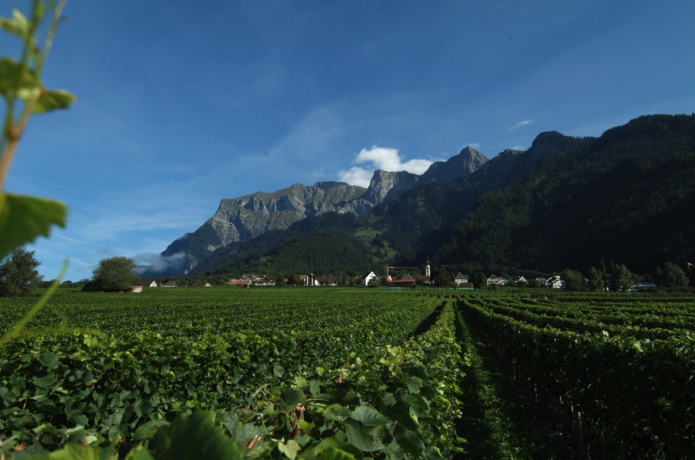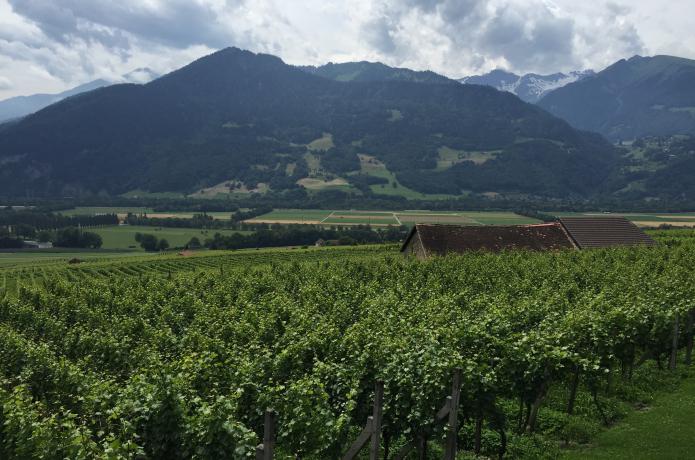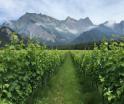Graubünden
The wine-growing region in the canton of Graubünden, called the Bündner Herrschaft*, covers just over 400 hectares. This is relatively small considering the large size of the entire canton.
Viticulture is only possible in the region of Bündner Herrschaft, also known as Heidiland, along the river Rhine in the wine-growing villages from Bonaduz to Fläsch. The climate is particularly mild and the surrounding mountains protect the vines from cold winds.
The soils are calcareous, similar to Burgundy. The small area produces excellent wines from the variety Pinot Noir and is therefore often referred to as Burgundy of Switzerland.
Nonetheless, there are also other national and international grape varieties. Especially noteworthy is the very old and native white grape called Completer**.
Another regional wine specialty is the "Churer Schiller", a light red wine and a blend of Pinot Noir and white grape varieties. To qualify for this exclusive designation, the grapes must all be cultivated on the same plot, with a predominant proportion of Pinot Noir.
The winemakers and vine growers of the Bündner Herrschaft rely on a sustainable viticulture that respects the environment. With the project "Biovision 2020" they aspire to complete the transition to organic wine production.
* Bündner Herrschaft
The name dates back to the time when the courts of Maienfeld and Malans were regions subservient to the alliance of the Three Leagues of 1471. As part of the League of the Ten Jurisdictions its inhabitants were both dominated and dominant. The alliance of the Three Leagues eventually lead to the formation of the Swiss canton of Graubünden in 1803 and the current constitution of the canton dates from 1892.
** Completer (4 ha)
The historical roots of this local grape date back to the Middle Ages. The first mention of a Completer vineyard located in Malans dates from 1321.The wine was destined to be served to the monks after the last religious service of the day (Completorium).









